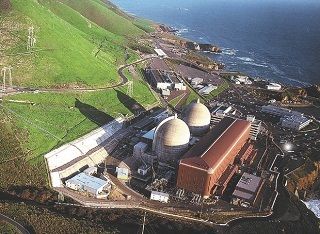Charging Electric Vehicles

I respond:
Keep in mind that the time required to recharge is a function of the power applied. Delivering 24 kWh (a full charge for a Nissan LEAF) in a millisecond means applying about 90 gigawatts, about 41 times the power output of the Diablo Canyon nuclear facility (pictured), the only such power plant remaining in California. Obviously, this is meaningless in the real world.
And speaking of the real world, no one objects to taking a few minutes to fill his gas tank. At 120 kW, the Tesla fast-charging stations are headed in that direction (that’s 24 kWhs in 12 minutes). Per “Inside EVs”: EV advocates/owners/followers believe that 150 kW is the magic number for charging. At that rate, EVs become so quick to“fuel” that a brief stop to use the restroom and to stretch for a few minutes puts enough charge into an EV that you’re again ready to roll.

Ultra capacitors and batteries are optimised for different applications.
If you want an extraordinary amount of power from a light weight device, but require only a small amount of energy, then ultra capacitors are ideal. One such application is hybrid vehicles where large amounts of breaking energy can be stored quickly then released to accelerate the vehicle.
Batteries store far more energy, but have around an order of magnitude less power density. Hence they are better for PIHV or all electric vehicles. The two can be combined where there is a high energy requirement combined with a requirement for short bursts of more intense power. Not all electric vehicles enjoy the huge power pack of a Tesla, and such a hybrid approach using ultra capacitors and batteries might be far more applicable to a high performance version of the Nissan Leaf etc.
As for the future, the two technologies appear to be converging, with possible future ultra capacitor designs based on nanotechnology technology possibly offering similar energy density to lithium batteries. Meanwhile, power density of batteries is increasing using broadly similar nanotechnology approaches.
Faster charging will be sweet but what would be realy sweet is when get a politicians that can see past tomorrow and build our high speed rail system with car transport capability but as if our stupid politicians were in office in the past no capital project would of ever been built